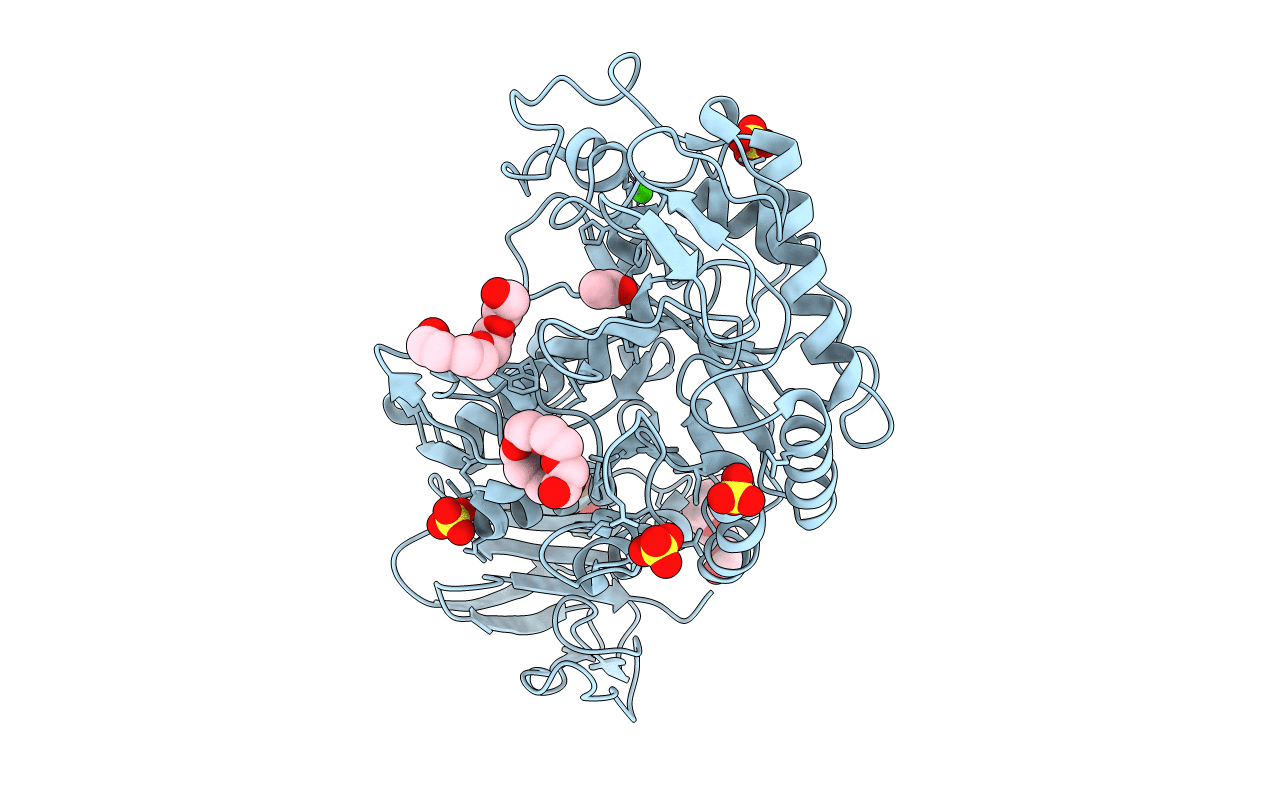
Deposition Date
2020-03-07
Release Date
2020-09-16
Last Version Date
2024-11-06
Entry Detail
PDB ID:
6M4K
Keywords:
Title:
X-ray crystal structure of wild type alpha-amylase I from Eisenia fetida
Biological Source:
Source Organism:
Eisenia fetida (Taxon ID: 6396)
Host Organism:
Method Details:
Experimental Method:
Resolution:
1.30 Å
R-Value Free:
0.18
R-Value Work:
0.16
R-Value Observed:
0.16
Space Group:
P 32 2 1


